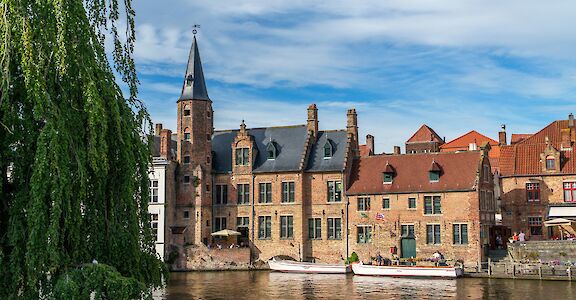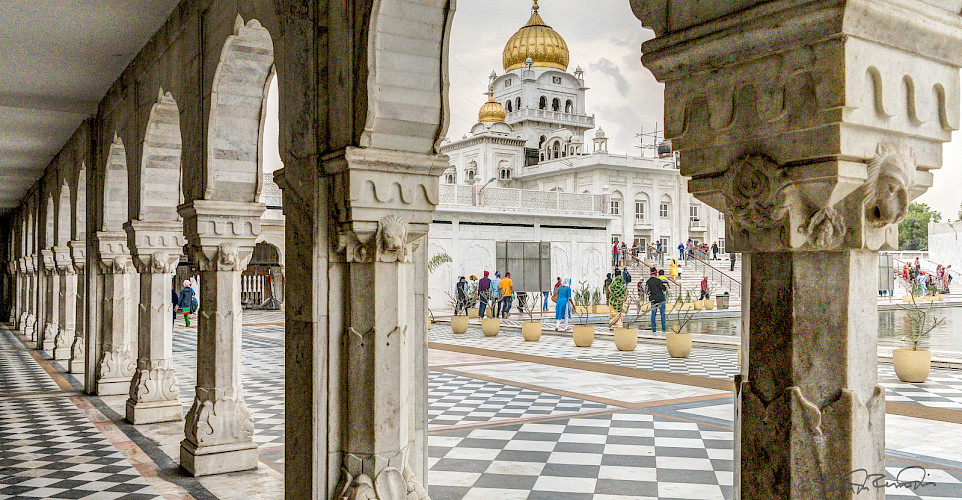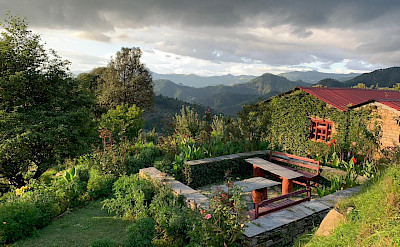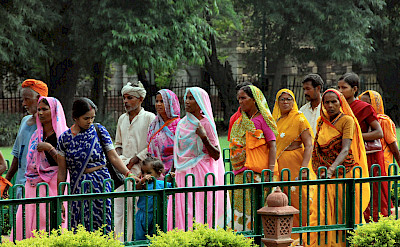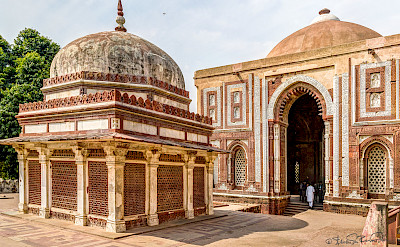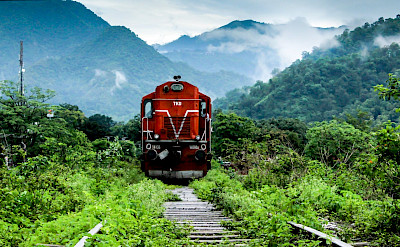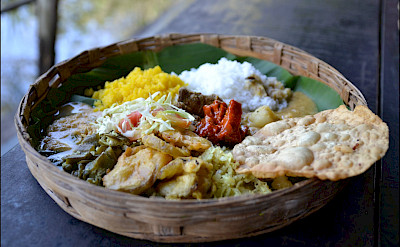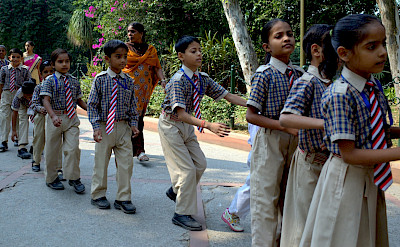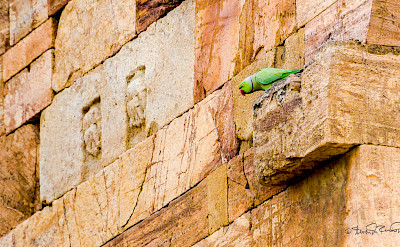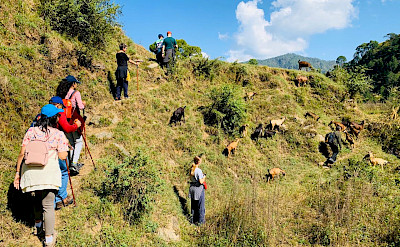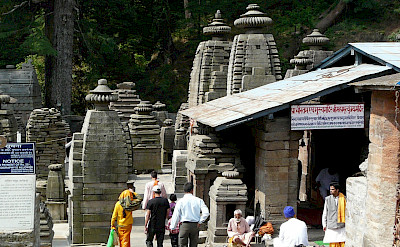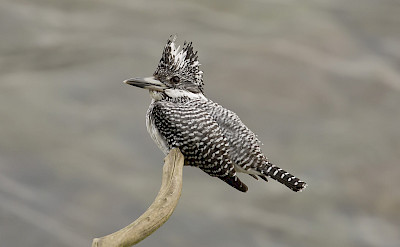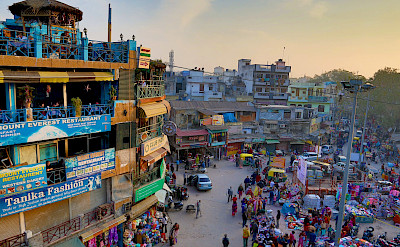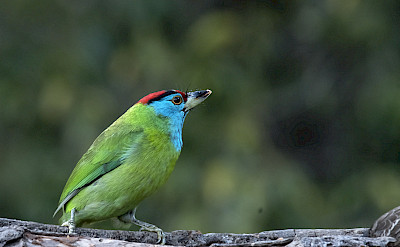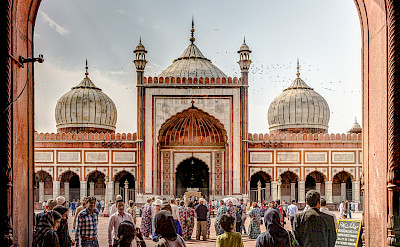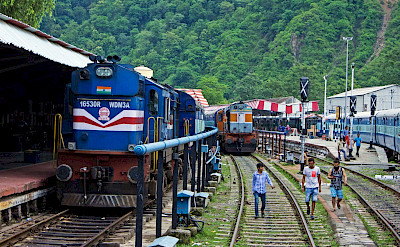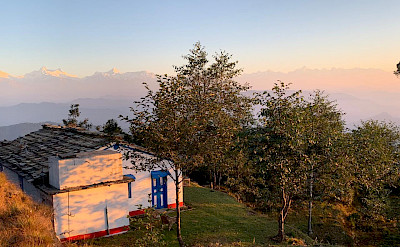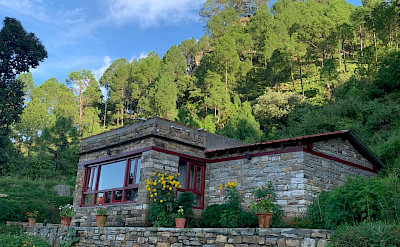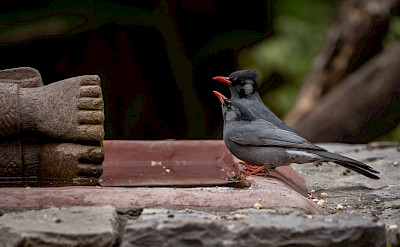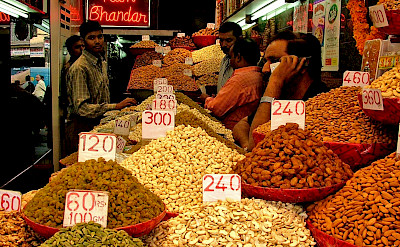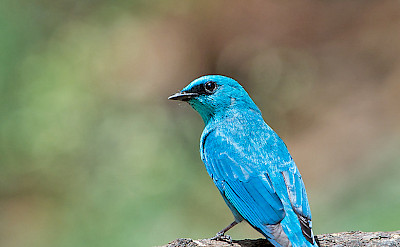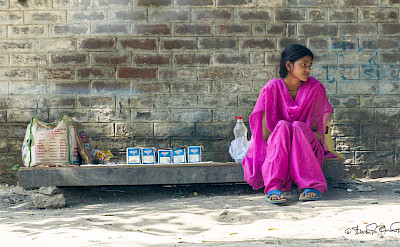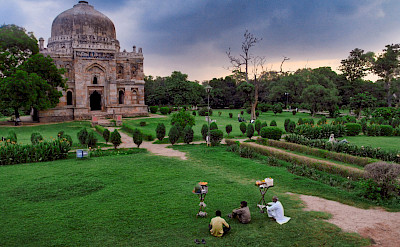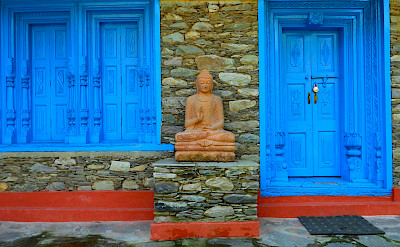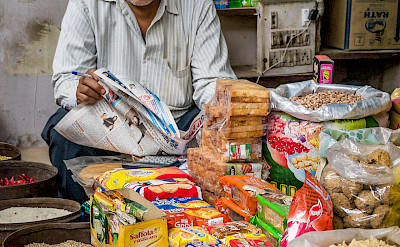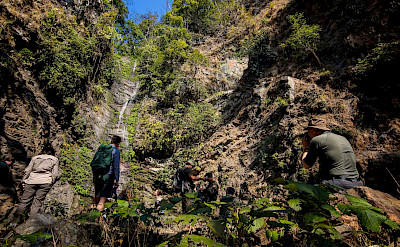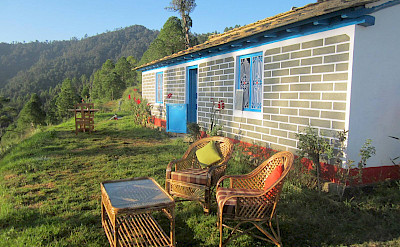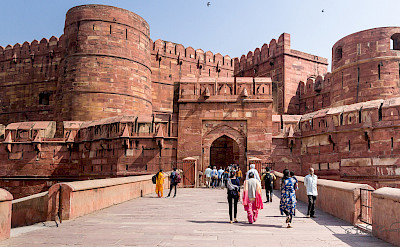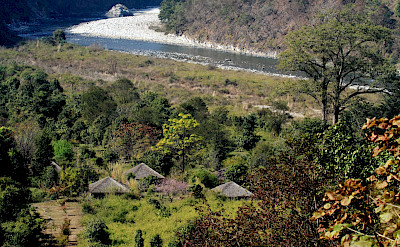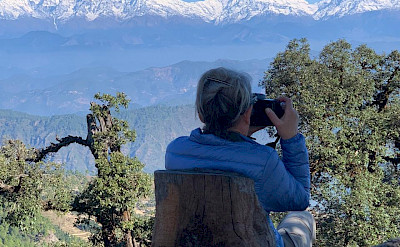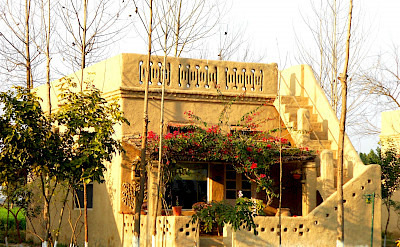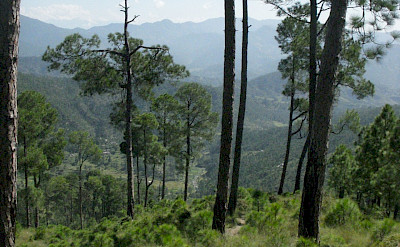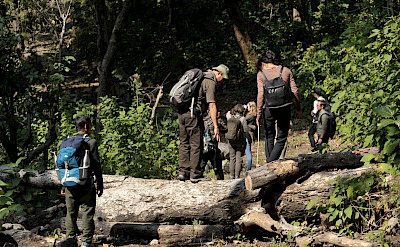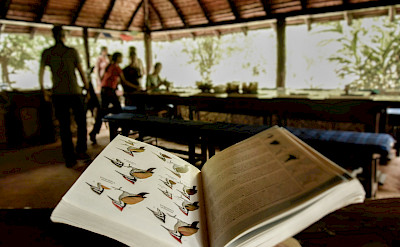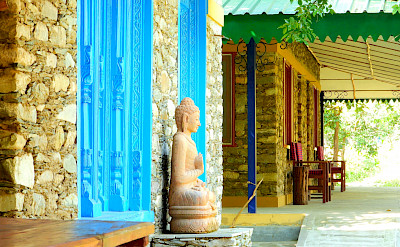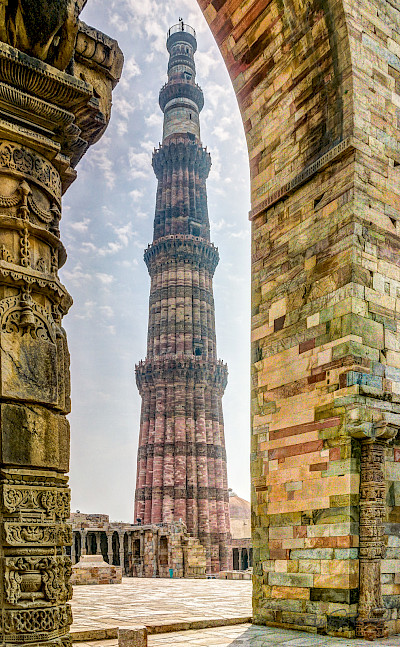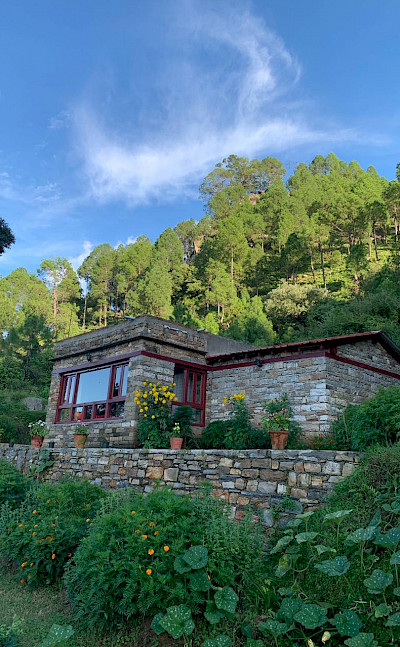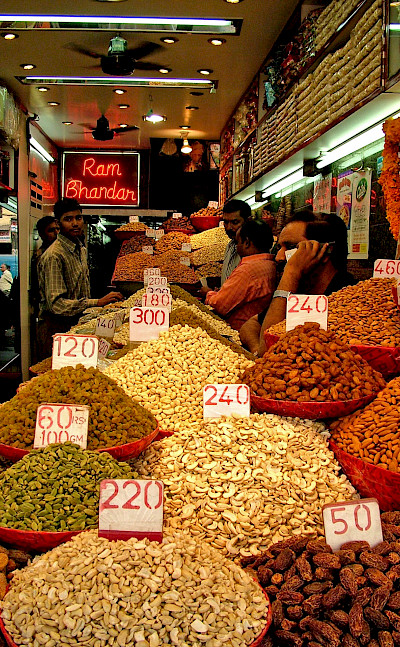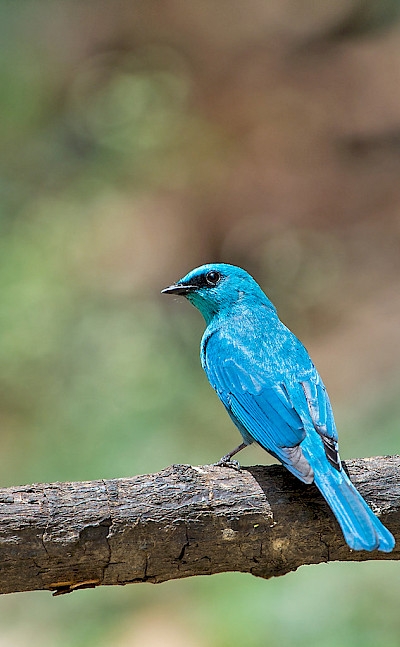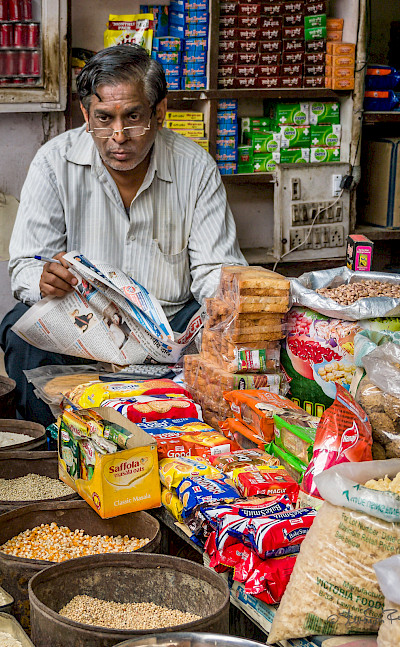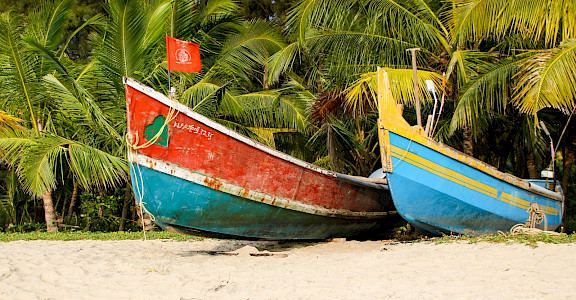Village Walks & Homestays in the Himalayas
India Hiking + Walking Tours
An authentic hiking experience featuring local culture & accommodations
-
Overview
This multi-faceted tour in India highlights the must-sees of Delhi, as well as providing insight into the lives and daily routine of the Kumaoni villagers. You will find yourself immersed in a thriving ancient culture while enjoying the simple pleasures of village life! Overnight stays in the village houses will give you the chance to experience warm and genuine hospitality.
You begin your tour in Delhi where there is ample time to explore and discover both the old and new of this bustling metropolis, including a day trip to Agra, the Taj Mahal, and Agra Fort.
Departing from Delhi, you begin a new chapter in your exotic adventure story, traveling by train and motor vehicle deep into the heart of the Kumaon Himalayas. Your different accommodations at the foothills of the tallest mountains in India feature unique retreats and village homestays.
Bordering Tibet to the north and Nepal to the east, this unspoiled area of India offers soft trekking in some of the most awe-inspiring scenery imaginable, bursting with the sound and color of birdlife, rich vegetation, and the animals that India is known for!
Highlights
- The old and new of Delhi
- Humayun's Tomb, India Gate, Autub Minar, Jama Masjid, Kinari Bazaar
- Taj Mahal
- Agra Fort
- Almora Town Hill Station
- Local, authentic accommodations and village stays
- Flat walks in the Himalayas through lush forests with plenty of birdlife
- Kalagarh Tiger Reserve
- A local and knowledgeable guide
- Stunning landscapes and sunsets
- Amazing hospitality
-
Itinerary
Day 1: Arrival in Delhi
Day 2: Delhi
Day 3: Day trip to Agra
Day 4: Delhi - Kathgodam by train - Itmenaan Estate
Day 5: Itmenaan Estate
Day 6: Itmenaan Estate - Almora - Thikalna Village
Day 7: Thikalna Himalayan Retreat
Day 8: Thikalna to Jhakersm Village House
Day 9: Jahkersm Village House to Corbett
Day 10: Corbett
Day 11: Corbett - Delhi
Day 12: Departure from DelhiDay 1: Arrival in Delhi
Today you will arrive at New Delhi’s International Airport. After you finish your immigration formalities, collect your baggage, and walk through the customs channel, our representative will meet you and transfer you to your hotel. Delhi is India’s capital and a major gateway to the country. Your room is actually reserved from the previous day at noon to ensure immediate occupancy regardless of your arrival time and sufficient time to overcome your jet lag. (D)Accommodation: Pride Plaza, Aerocity, or similar
Day 2: Delhi
Contemporary Delhi is a bustling metropolis, which successfully combines in its folds - the ancient with the modern. In the shadows of the towering skyscrapers, the remnants of a bygone time can be found. Many monuments stand as silent reminders of the region’s ancient legacy. The first impressions of any visitor traveling in from the airport are of a spacious, tree-lined, garden city, with a number of beautiful parks. In New Delhi, you can visit Humayun's Tomb, built by the widow of the second Mughal Emperor, Humayun, and a precursor of the Taj Mahal. The imposing World War I memorial, India Gate, the Parliament Building, President House, and Qutub Minar, the tallest stone tower in India.You can also go to Old Delhi to visit Jama Masjid, one of the largest mosques in Asia. It offers an excellent view of the old city and the Red Fort. The walk then takes you through the narrow lanes and bazaars of the old city; the Havelis (mansions) which still retain their traditional appearance, Jain temples, small businesses, Kinari Bazaar (one of the most popular bazaars in Delhi), and Parathe wali Gali (the street famous for fried bread). (B, L, D)
Accommodation: Pride Plaza, Aerocity, or similar
Day 3: Day trip to Agra
About mid-morning, you will leave for Agra to explore the monument dedicated to love from an Emperor for his queen, the legendary, Taj Mahal. Your exploration of the city includes visits to the Taj Mahal and Agra Fort.
The Taj Mahal is everything that has been said about it and more. Taking 22 years and 20,000 men to build, the white marble was quarried 200 miles away and was transported to the site by a fleet of 1000 elephants. Built by the Mughal Emperor Shah Jahan as an expression of his love for his wife Mumtaz Mahal, in the mid-17th century, the Taj Mahal is truly one of the wonders of the world. Though the Taj appears to be amazingly perfect from almost any angle, it is the close-up marble inlay work, which is really astounding.Later you will visit Agra Fort, the seat and the stronghold of the Mughal Empire under successive generations. The present structure owes its origins to Akbar who erected the walls and gates and the first buildings on the eastern banks of the Yamuna River. Shah Jehan added the impressive quarters and the mosque while Aurangzeb added the outer ramparts. Highlights are the Hall of Public Audience and its Royal Pavilions. (B, L, D)
Travel: Train journey, 2 hours (one way)
Activity: Walking and sightseeing in Agra (2 hours)
Accommodation: Pride Plaza, Aerocity, or similarDay 4: Delhi - Kathgodam by train - Itmenaan Estate
Early today you will be transferred to the railway station for train travel to Kathgodam. You may carry a packed breakfast from the hotel, but the train serves a good breakfast too, and it is included in the ticket cost. You depart from Delhi at 6 am and arrive in Kathgodam at 11:40 am.Upon your arrival in Kathgodam, you will be met at the railway station and driven (2 1/2 hours) to Itmenaan Estate. Set in a peaceful rural setting in the Kumaon Himalayas, the 10-acre estate includes virgin pine, oak, and rhododendron trees, terraced fields laden with seasonal fruits and vegetables, and to top it all, a small private perennial natural spring. The estate offers panoramic views of the Himalayas including the majestic Nanda Devi.
At Itmenaan Estate you may choose to just relax with a book and admire mesmerizing valleys and the snow-clad peaks, enjoy the warmth of the bonfire, and gaze at the countless stars in the sky. Those who are looking for some more walking within and around the estate, may trek to the highest point for enchanting views or roam the beautiful oak and rhododendron forests. (B, L, D)
Travel: Train ( 5 hours) & transfer vehicle (3 hours)
Activity: Optional one-hour walk
Elevation: 2000 - 2500 meters
Accommodation: Itmenaan Estate**The 100-year-old traditional Kumaoni style stone house on the estate has been painstakingly restored and offers three tastefully designed en suite bedrooms. There is also the newly built Deodar Cottage. In and around the house are abundant places for you to unwind and relax, the courtyard overlooking the mountains and verdant valleys, the semi-open-air dining area, and numerous nooks and corners perfect for reading or for fulfilling your spiritual quest.
Day 5: Itmenaan Estate
The beautiful Kumaon region is also known as Dev-Bhumi or the Abode of Gods. This is a land of rich cultural heritage, age-old temples, majestic Himalayan peaks, picture-postcard terraced fields, and tempting fruit orchards. To experience this stunningly beautiful region on foot is truly inspiring and rewarding. Today, you will explore the unspoiled villages of Kumaon. You can walk t around freely and interact with the local communities, exchange stories with the elderly people over a cup of chai, or help villagers working in the fields. (B, L, D)Activity: Walk (4 hours)
Elevation: 2000 - 2500 meters
Accommodation: Itmenaan EstateDay 6: Itmenaan Estate - Almora - Thikalna Village
You will be transferred 3.5 hours to Almora town.
En route to Almora, you will stop briefly at the charming Chitai Temple, which is located just outside Almora town. The Chitai Temple is dedicated to Golu Devta, who is considered to be the God of Justice. As one approaches the temple, the first thing that strikes you is the myriad of bells hanging at the entrance. People come to the temple to make a wish to Golu Devta and those who are not able to personally visit the temple, write letters to Him seeking justice. Once a wish is fulfilled people come and hang a brass bell on any of the temple walls, and hence the sea of hundreds of bells all over the temple.After visiting Chitai Temple you continue to Almora town. This picturesque hill station is situated in the Kumaoun region of Uttarachal state. Situated at an altitude of 1650 meters, it is among the few hill stations of India, not created by the British. In fact, it is an ancient town, and some 400 years ago, it was the capital of the Chand Rajas of Kumaon. It has an interesting bazaar and good views of the mountains. (B, L, D)
Travel: Vehicle transfer ( 3.5 hours)
Activity: Walk (2 - 3 hours)
Elevation: 1600 - 1800 meters
Accommodation: Thikalna Village House**Deep in the oak, rhododendron, and pine forests with uninterrupted awe-inspiring views of the Himalayas lies Thikalna Himalayan Retreat. Located on a cliff with 180-degree view of the snow-clad Himalayas and splendid valley, this small retreat is ideal for long vacations. If you have dreamt of staying a few days in perfect mountain solitude, miles away from civilization, in a village setting, then this house is just for you. The house has been renovated, and bathrooms attached to each of the two bedrooms, to ensure that the stay is comfortable.
Day 7: Thikalna Himalayan Retreat
After breakfast, you will walk downhill through a small trail full of Rhododendron trees and then continue walking on the trail to Dhaulchina. From Dhaulchina you will walk downhill through pine forest to Kachula and then continue on the trail to the small village town of Barechina. Sights on the trail include villages buzzing with little children, people farming their fields, elderly men enjoying their hookah over tea, cattle grazing, the elegant Magpie, and much more.From Barechina you will walk back to the village house for a late lunch. The remainder of the day may be spent at leisure or you may explore the neighboring countryside. (B, L, D)
Activity: Walk (4 - 5 hours)
Elevation: 1600 - 1800 meters
Accommodation: Thikalna Village HouseDay 8: Thikalna to Jhakersm Village House
Today you walk along the ridge towards Saukiyathal Temple and Jageshwar Temple complex with beautiful views of the Nanda Devi range on your left. As you near Jageshwar through a valley, you will notice the pine forest now changes to thick Deodar (Cedar). The temples at Jageshwar are believed to have been constructed between the 8th century and the 18th century. The architecture belongs to the Nagara style of North India, characterized by a tall curved spire surmounted by an amalaka (capstone) and a kalasha crown.After visiting the temple complex, you will be served a picnic lunch nearby. The next stretch of the walk will take an hour where you walk through a mix of rhododendron and pine forests, with occasional uphill and downhill stretches.
Your uphill walk to the villages of Kot Naikana begins. The end of the walk will bring you to the village of Kotnaikana where you will spend your night at Jhakersm Village house. You will be taken to the sunset point which is a 15 minutes’ walk from the property. The evening may be spent at leisure by a bonfire. (B, L, D)
Activity: Walk ( 4 - 5 hours)`
Elevation: 1600 - 1800 meters
Accommodation: Jhakersm Village House**Jhakersm Village House, in the midst of oak, rhododendron, pine, and deodar forest is a painstakingly renovated old house converted into a boutique homestay. Enjoy the delectable food, explore the forests on a guided walk, go for beautiful bird watching, understand the rural way of life on a leisurely walk to the nearby village, experience the scenic views of snow-capped peaks or just do nothing and relax in the serenity; Jhakersm village house offers everything a nature lover urges for.
Day 9: Jahkersm Village House to Corbett
You will be driven five hours to the foothills of the Indian Himalayas to one of India’s most picturesque and finest Tiger Reserves, Corbett.Corbett National Park comprises a 520.8 km2 (201.1 sq mile) area of hills, riverine belts, marshy depressions, grasslands, and a large lake. In 1974, it was chosen as the location for launching Project Tiger, an ambitious and well-known wildlife conservation project. To stop poaching and timber cutting, 797.72 square kilometers were added in 1991 as a buffer zone to the Corbett Tiger Reserve.
The dense and moist deciduous forest mainly consists of Sal, Haldu, Ficus, Rohini, and mango trees. The forest covers almost 73% of the park; 10% of the area consists of grasslands. It houses around 110 tree species, 50 species of mammals, 650 bird species, and 25 reptile species.
Arrive in the afternoon and cross the river on a bamboo raft to the serene location of Vanghat, your lodge on the periphery of the forest and overlooking a river. Vanghat, known as a buffer zone, is located on the bank of the Western Ramganga River, inside the Kalagarh Tiger Reserve, situated on the northern part of Jim Corbett National Park. The rest of the day is free to rest and soak in the views and indulge in some birding around the lodge. (B, L, D)
Travel: Transfer vehicle (5 hours)
Activity: Walk (1 hour)
Elevation: 500 - 1200 meters
Accommodation: Vanghat LodgeDay 10: Corbett
You will spend the day today walking in the forest. There will be two different walks, both exploring a different part of the forest. Vanghat is situated in a range of hills that are a transition zone between the plains to the south and the mountains to the northeast, meaning that in this melting pot of habitats, you see many species, either as residents or migrants.The rich river habitat attracts Pallas's Lesser and Grey-headed Fish Eagle, numerous kingfishers, Brown and Tawny Fish Owl, which at dusk are more often heard than seen. The emblematic Great Hornbills journey daily up and down the valley, their vast wings audible in flight, and sometimes have been spotted feeding on the ficus trees on the riverside opposite camp. Brown Dipper, Wallcreeper, and several species of Forktail (the Spotted and Little Forktail being the most common), Plumbeous and White-capped Water Redstarts, and several wagtail species are amongst the altitude migrant visitors to the area.
You will then return to the lodge for a quick lunch, followed by another walk, in the opposite direction. This walk reveals the vocal White-throated and White-crested Laughing Thrush and the beautiful but vociferous Common Green Magpie. In the upper-canopy, scan for colorful Long-tailed Broadbill and Maroon Orioles and the hunting parties of Blue-winged Minla, Black-throated Tit, Grey-headed Canary Flycatcher, Chestnut-bellied Nuthatch, and Scarlet Minivets. Plain-backed and the much sought-after Scaly Thrush prefer to forage in the undergrowth between Sal trees, where one also comes across Kaleej Pheasants and Junglefowl. (B, L, D)
Activity: Walk (4 hours)
Elevation: 500 - 1200 meters
Accommodation: Vanghat LodgeDay 11: Corbett - Delhi
You can enjoy another short walk before breakfast to enjoy the sunrise on the river. If lucky, you may come across some wildlife on the riverbed. Later, you will check out and drive back to Delhi (5 hours)Once in Delhi, check-in to your airport hotel for the last night. Farewell dinner at a local restaurant. (B, L, D)
Travel: Transfer vehicle ( 5 hours)
Activity: 1-hour walk
Elevation: 500 - 1200 meters
Accommodation: Pride Plaza, Aerocity, or similarDay 12: Delhi
Departure. Very early transfer to the airport for your return flight. -
Map
-
Accommodation
You will be accommodated on many nights in village houses, made in the traditional way using stone, wood, and slate. The interior walls and floors are painted with mud and lime, keeping them cool in the summer and warm in the winter. Partially renovated with private outhouse bathrooms and western toilets added, the houses are rustic but clean and comfortable with all basic amenities. After a day‘s walk, you can enjoy a refreshing hot bucket bath! Fresh towels, linens, and organic hand-made soap produced locally and provided at each house. Traditional Kumaoni food is cooked hygienically and mineral water provided.
-
Inclusions
What’s Included
- Accommodations for 11 nights in Hotel Pride Plaza in Delhi, and in village houses & Itmenaan Estate
- Breakfast during stay in Delhi
- Breakfast lunch, & dinner during stay at the village houses
- All meals, snacks, tea, & coffee
- English speaking guide during all walks
- Picnic lunches at beautiful locations
- All local taxes
What’s Not Included
- Beverages with meals
- Travel Insurance (please be sure to include emergency evacuation provisions)
- Gratuities
-
Dates & Pricing
Dates & Pricing
Extra Options
2025
Dates and prices on request.
Please Note
- Rates are per person, based on double occupancy
- Tour prices are based on the fuel costs at time prices are set, often months or years in advance. In rare cases, additional fees may apply for fuel cost increases.
- Information to read before you book
- We recommend purchasing trip insurance
- Please see our FAQ
-
Extra Info
Skill Level — Easy
A high level of fitness is not required to do this program. You can set your own pace making the walk ‘easy’ or ‘moderate’. You do need to be in good health and accustomed to walking, trekking, or hiking for exercise.
Airport Info
Fly to Delhi/Indira Gandhi International Airport (DEL), situated in Palam, 15 km south-west of the New Delhi railway station & 16 km from New Delhi city center.
Local Travel
Arrival and departure airport transfers are included in your tour price.
Climate
Each season has its own magic! You decide what is the best time for you as this tour can be taken any time during the year, barring peak the peak rainy season of June, July, & August.
The Spring features blue skies, cool weather, fruit trees in blossom, & the forests flaming red with rhododendron flowers. Mountain views can be hazy.
Autumn means golden sunshine, cool weather, the hills dotted with cosmos flowers, and the wild cherry trees in bloom. Mountain views are good.
From December to February and even into March, it is winter in India. It is crisp, cold, and clear with the sweet scent of the mimosa filling the air! Mountain views are at their best.
Please check local conditions before your arrival.Important to know
Documents
Passport/Visa information: Please make sure that your passport is still valid for at least six months from the end of the tour. An electronic visa (e-visa) is available for passport holders of 150 countries including Australia, New Zealand, the UK, the USA, and citizens of EU countries, with the application and the fee submitted. Fees vary depending on nationality. The visa is valid up to 60 days from the date of arrival. Visit here to apply and for the full list of eligible countries. For citizens of countries not specified a visa must be acquired before arriving in India. Please contact your local Indian embassy to receive a standard tourist visa. Locations on embassies worldwide are available here.
Vaccinations
Mandatory vaccinations?
There are no compulsory vaccinations although it is strongly recommended that you are vaccinated against Typhoid and Hepatitis A. Tetanus and polio vaccinations should also be up to date at the time of travel. Please visit the CDC site for more information and remember to consult with your doctor/physician for the most recent information.Travel during covid?
It is important that all passengers must check the latest COVID-19 protocol and visa norms from the corresponding airline or embassy before commencing their journey. Each state has issued specific guidelines for the Covid-19 protocol. No quarantine is required for passengers arriving with a negative RT PCR certificate provided the test is conducted within the stipulated period from the date of journey.Good to know
-
Shoes: The path will be rough at some stretches and hence we advise sturdy shoes/boots with excellent soles.
-
Essentials in your bag: Strong sunscreen, sunglasses, lip balm, insect repellent, personal medication, and a hat to ward off the high daytime UV. If you suffer from mountain driving sickness, please carry appropriate medication.
Tour Operator
Le Passage to India
-
-
Photos
-
Reviews
Reviews
Reviews coming soon!
This tour is brand new, which is why there aren’t any reviews yet. Crafted by trusted local partners and backed by our 25+ years of experience, it’s a journey we’re excited to share.
Be among the first to experience this adventure and inspire future travelers with your story!

